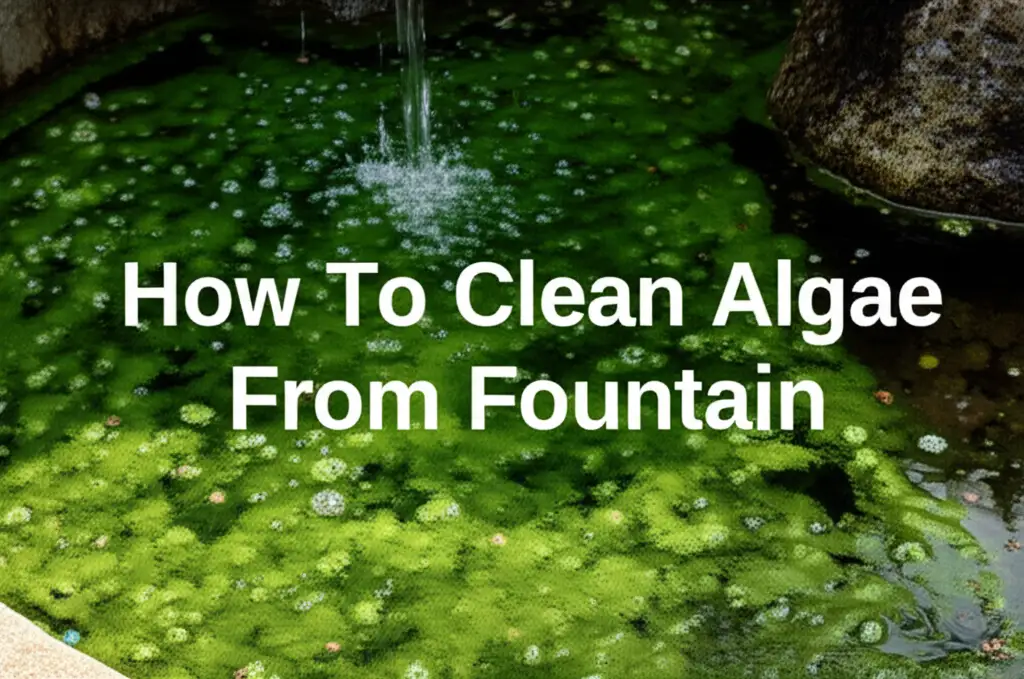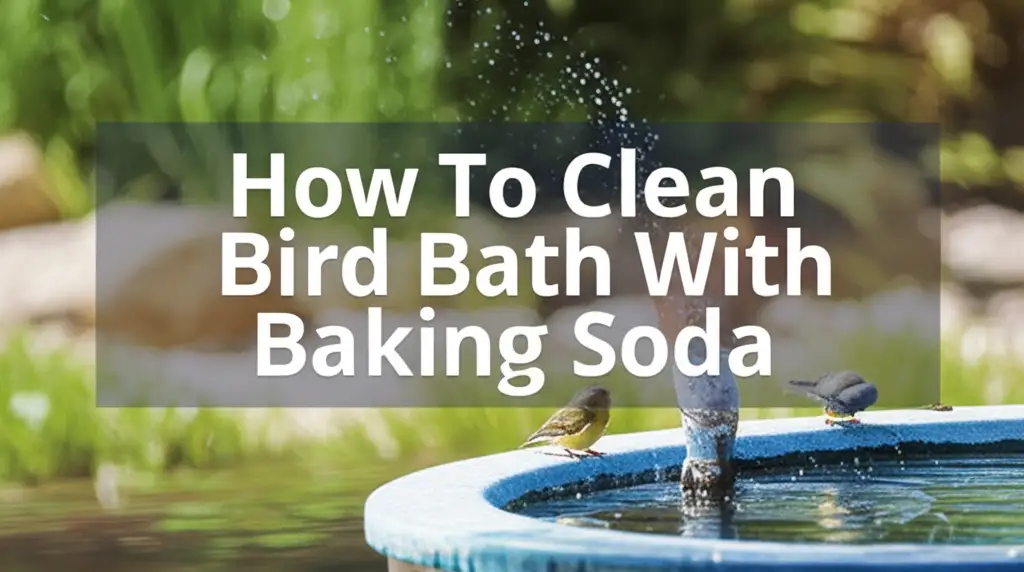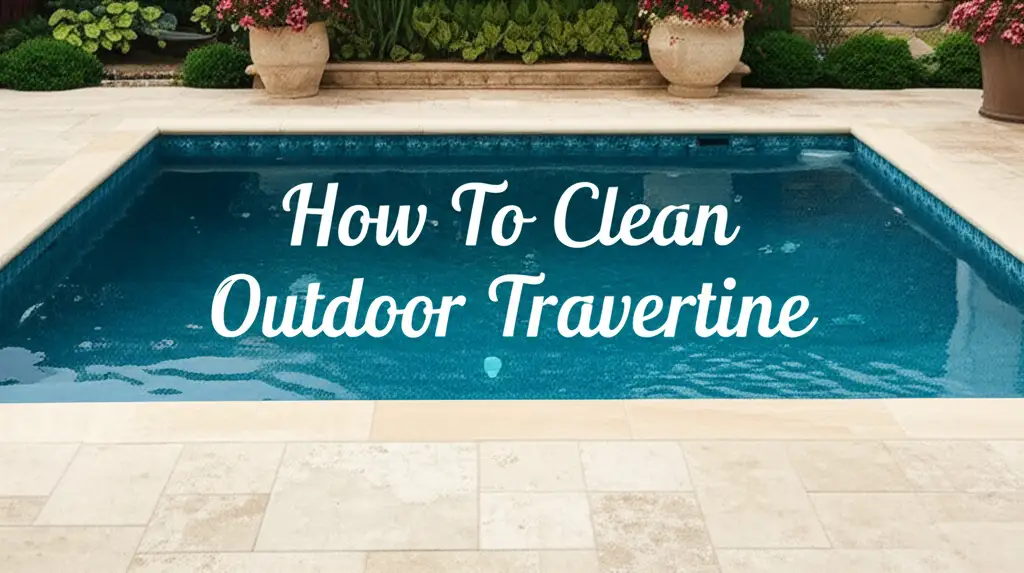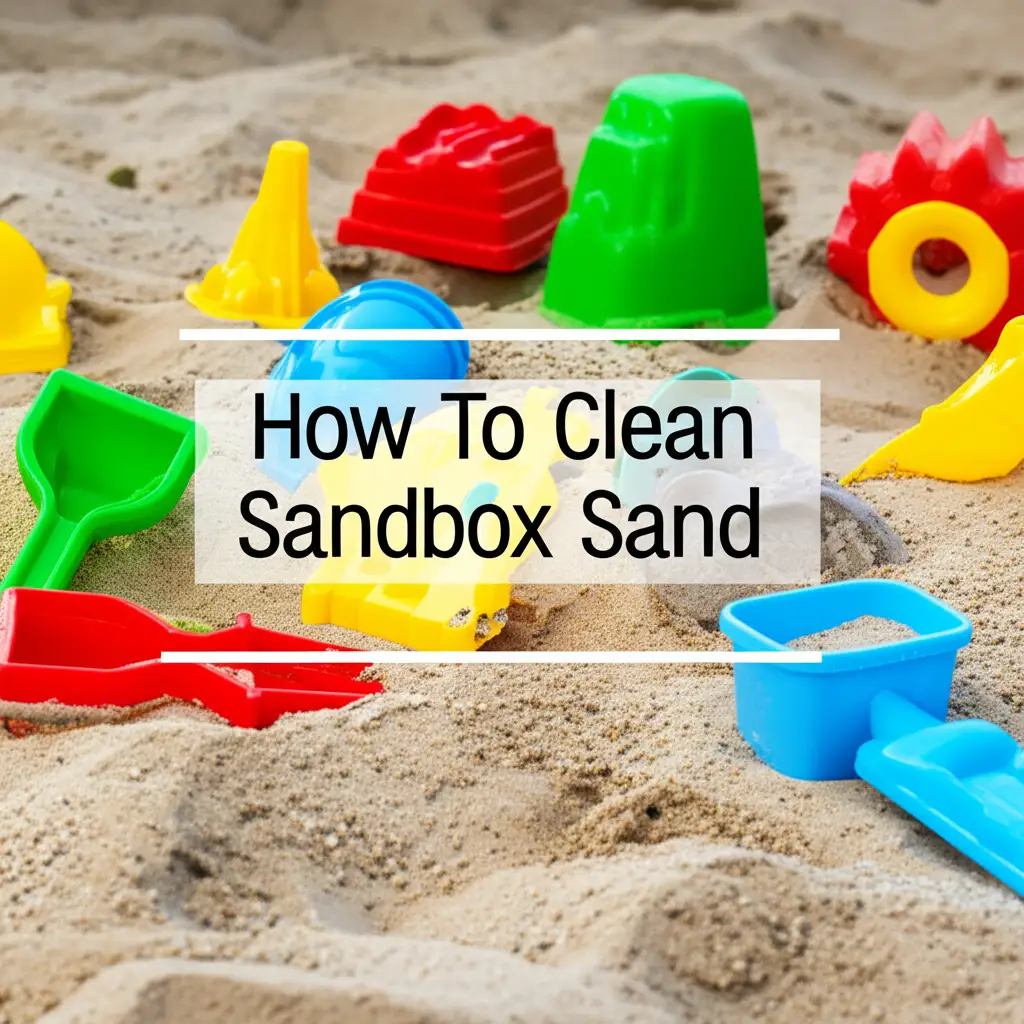· Outdoor Maintenance · 14 min read
How To Clean Algae From Fountain

Restore Your Fountain: How To Clean Algae Effectively
Is your beautiful fountain looking more like a green swamp? Algae growth is a common issue for outdoor water features. This slimy, green substance not only looks unpleasant but can also clog pumps and reduce your fountain’s lifespan. I know how frustrating it is to see a once-pristine water display covered in this unwelcome growth.
You want your fountain to be a focal point, not a breeding ground for green slime. Knowing how to clean algae from a fountain is essential for any fountain owner. This article will guide you through the process, from basic tools to advanced cleaning solutions. We will cover natural methods, chemical treatments, and vital prevention strategies. Get ready to bring back your fountain’s sparkle.
Takeaway:
- Regular fountain cleaning prevents algae buildup.
- Drain and scrub your fountain using a stiff brush and mild cleaners.
- Use natural solutions like vinegar or baking soda for effective algae removal.
- Consider algaecides for stubborn growth, following safety instructions.
- Implement preventative measures such as shading, filtration, and routine water changes.
To effectively clean algae from a fountain, first, drain all water. Then, scrub the surfaces vigorously with a stiff brush and a mixture of white vinegar and water or a mild bleach solution. Rinse thoroughly to remove all residue. Finally, refill the fountain with fresh water, adding an algaecide or a small amount of bleach for prevention.
Understanding Algae Growth in Fountains
Algae is a simple plant that grows quickly in water. It needs sunlight, warmth, and nutrients to thrive. Fountains provide an ideal environment for algae. The water in a fountain is often stagnant or slow-moving for periods. Sunlight hits the water, providing energy for growth. Airborne spores, dust, and organic debris like leaves contribute nutrients.
Different types of algae can appear. Green algae is the most common, forming a slimy film. Black algae can also appear, creating dark, stubborn spots. Pink algae is actually a bacteria, but it looks like algae. These growths make your fountain look dirty. They can also clog pumps and filters. This reduces water flow and may damage fountain components. Removing algae quickly maintains your fountain’s beauty and function.
Essential Tools and Materials for Algae Removal
Before you begin cleaning, gather all necessary tools. Having everything ready saves time and effort. You will need safety gear to protect yourself. This ensures a safe cleaning process.
Here is a list of items you will need:
- Rubber Gloves: Protect your hands from cleaning solutions and algae.
- Safety Goggles: Keep splashes out of your eyes.
- Stiff-Bristled Brush: A scrubbing brush with tough bristles works best for removing stubborn algae. You might need one with a long handle for larger fountains.
- Bucket: To hold water or cleaning solutions.
- Garden Hose: For rinsing the fountain.
- Shop Vac or Sump Pump (Optional): For quick water removal from large fountains.
- Cleaning Solutions: Options include white vinegar, baking soda, mild dish soap, or a diluted bleach solution. Avoid harsh chemicals that could damage the fountain material or harm plants and animals nearby.
- Non-Scratch Scrubber or Sponge: For delicate surfaces.
- Soft Cloths: For wiping and drying.
Choosing the right tools helps you clean algae more effectively. For example, a stiff brush helps break through thick algae layers. Using a shop vac speeds up water removal. Always prioritize your safety by wearing gloves and goggles. This preparation makes the cleaning job much easier.
Step-by-Step Guide: Deep Cleaning Your Algae-Ridden Fountain
Cleaning an algae-covered fountain requires a systematic approach. Follow these steps for a thorough clean. This process ensures you remove all algae and prevent immediate regrowth. I always find a step-by-step method makes the job less daunting.
1. Drain the Fountain
First, turn off the fountain pump. Unplug it from the power source. This prevents electrical hazards. Then, remove any decorative elements or statuary. Take them out of the water. Now, drain all the water from the fountain basin. For small fountains, you can tip them over. For larger ones, use a bucket, a shop vac, or a submersible pump. Make sure the basin is completely empty.
2. Remove Large Debris
Once the water is out, scoop out any large debris. This includes leaves, twigs, insects, and other organic matter. Use your gloved hands or a small scoop. This step makes scrubbing much easier. This debris provides nutrients for algae growth. Removing it helps prevent future problems.
3. Scrub the Surfaces
Now, it is time to scrub. Mix your chosen cleaning solution in a bucket. For a strong natural option, use equal parts white vinegar and water. For tough stains, a solution of 1 part bleach to 9 parts water works well. Dip your stiff-bristled brush into the solution. Scrub all fountain surfaces vigorously. Pay special attention to corners, crevices, and textured areas. These spots often hold more algae. Scrub the pump and any filters too. If you are dealing with algae in other water features, similar scrubbing techniques apply, as seen in how to clean algae from an above-ground pool with algae.
4. Rinse Thoroughly
After scrubbing, rinse the fountain completely. Use a garden hose with good water pressure. Rinse all surfaces. Make sure no cleaning solution remains. This is crucial if you used bleach. Bleach can harm plants, animals, or the fountain material if not fully rinsed. Direct the rinse water away from plants and grass. Continue rinsing until you see no more suds or residue. If you used a bleach solution, rinse multiple times.
5. Reassemble and Refill
Once rinsed and clean, reassemble your fountain. Put back any removed decorative elements or statuary. Reinstall the pump and filter, if applicable. Then, refill the fountain with fresh, clean water. Do not forget to add any preventative treatments now, before turning the fountain back on. Adding fresh water helps create a less hospitable environment for algae.
Natural Algae Cleaning Solutions: Safe and Effective
Many people prefer natural cleaning solutions. They are safer for pets, children, and nearby plants. These methods often use common household items. I find these natural options surprisingly effective for regular maintenance. They are a good choice for those who avoid harsh chemicals.
Vinegar Power
White vinegar is a powerful natural cleaner. Its acidic nature breaks down algae and mold. Mix equal parts white vinegar and water in a spray bottle. Spray this solution directly onto algae-covered surfaces. Let it sit for 15-20 minutes. Then, scrub with a stiff brush and rinse thoroughly. For stubborn stains, use undiluted vinegar. This method is safe for most fountain materials. It also helps remove mineral deposits. You can use vinegar for other cleaning tasks, too, such as when you clean mold with vinegar or even clean your shower with vinegar.
Baking Soda Scrub
Baking soda is another excellent natural abrasive. It is gentle yet effective. Make a paste using baking soda and a small amount of water. Apply this paste directly onto the algae. Let it sit for a few minutes. Then, scrub with a brush or sponge. The mild abrasive action of baking soda helps lift the algae. Rinse the fountain thoroughly after scrubbing. Baking soda also helps neutralize odors.
Salt and Lemon Juice
A combination of salt and lemon juice creates an acidic scrub. Mix coarse salt with lemon juice to form a paste. Apply this paste to algae spots. Rub it in with a cloth or sponge. The salt acts as an abrasive, while lemon juice provides acidity. This method is particularly useful for small, localized algae patches. Remember to rinse well to remove all salt residue.
Hydrogen Peroxide (3%)
Hydrogen peroxide is a mild antiseptic. It can kill algae without leaving harmful residues. Use a standard 3% hydrogen peroxide solution. Apply it directly to the algae with a spray bottle or sponge. Let it sit for about 10-15 minutes. It will bubble as it works. Then, scrub and rinse. Hydrogen peroxide breaks down into water and oxygen. This makes it environmentally friendly.
Using these natural options keeps your fountain clean and safe. They require a bit more scrubbing effort than chemicals. However, they are worth it for the peace of mind they offer.
Chemical Algaecides: When and How to Use Them Safely
Sometimes, natural methods are not enough. For persistent or heavy algae growth, chemical algaecides become necessary. These products are designed to kill algae quickly. However, they require careful handling. Always read the product label before use.
Choosing the Right Algaecide
Not all algaecides are suitable for all fountains. Some are specifically for swimming pools or ponds. Make sure you choose an algaecide labeled safe for fountains. Look for products that specify “fountain safe” or “safe for use with fish and plants” if your fountain includes them. Copper-based algaecides are common. They are effective but can stain some fountain materials. Always check for compatibility with your fountain’s material.
Application Steps
- Read Instructions: Every algaecide has specific instructions. Follow them precisely. Do not guess the dosage. Overdosing can harm your fountain or surrounding environment.
- Pre-Clean: For best results, remove as much algae as possible manually first. This allows the algaecide to work on the remaining, stubborn growth.
- Add Algaecide: Dilute the algaecide according to the label. Pour it into the fountain water. Distribute it evenly.
- Circulate: Turn on the fountain pump. Let the water circulate for several hours. This helps distribute the algaecide throughout the fountain.
- Monitor: Observe the fountain. Algae should begin to die within a few days. You might see it turn white or brown.
- Drain and Clean (Optional): After the algae dies, you may want to drain the fountain. Then, scrub away any dead algae and rinse. This keeps the water clean.
Safety Precautions
Chemical algaecides are powerful. They can cause skin or eye irritation. Always wear protective gear. This includes rubber gloves and safety goggles. Keep children and pets away from the fountain during application. Store algaecides in their original containers. Keep them in a cool, dry place, away from direct sunlight. Proper storage prevents accidental exposure. Do not mix algaecides with other chemicals. This can create dangerous reactions. For information on handling other similar cleaning situations, consider how to clean algae from a pool screen enclosure, where different chemicals and safety measures apply.
Preventing Algae Growth: Long-Term Strategies
Cleaning algae is work. Preventing it is smarter. Proactive measures save you time and effort. I have found that a little prevention goes a long way. These strategies help keep your fountain sparkling year-round.
1. Maintain Proper Water Levels
Fountains need adequate water levels. The pump needs to be fully submerged. This prevents the pump from burning out. Low water levels also increase water temperature. Warmer water promotes algae growth. Top off your fountain regularly, especially during hot weather. Use fresh, clean water.
2. Use a Fountain Treatment
Many products exist to prevent algae. These are often called enzymes or clarifiers. They work by breaking down organic matter. This starves the algae of nutrients. Add these treatments to your fountain water regularly. Follow the product instructions for dosage and frequency. These treatments are usually safe for animals and plants.
3. Consider Fountain Placement
Sunlight is a primary fuel for algae. If possible, place your fountain in a shaded area. This limits direct sun exposure. If relocation is not possible, consider adding a canopy or umbrella. Shade reduces water temperature. It also slows down algae reproduction significantly.
4. Improve Filtration
A good filter removes debris and microscopic particles. These particles contribute to algae growth. Ensure your fountain has a working filter. Clean or replace the filter regularly. This prevents clogs and keeps water clear. A clean filter means less food for algae.
5. Regular Cleaning Routine
Even with prevention, some algae might appear. Establish a routine cleaning schedule. This could be weekly, bi-weekly, or monthly, depending on your fountain’s exposure. Wipe down surfaces. Remove any visible algae. Change the water regularly. This prevents a buildup of nutrients. For example, similar routine cleaning is crucial when learning how to clean mold in your shower, as constant moisture fosters growth.
6. Introduce Aquatic Plants (Carefully)
Some aquatic plants can help. They compete with algae for nutrients. Examples include water hyacinths or water lettuce. However, research plants carefully. Some can clog pumps. Only introduce plants suitable for your fountain’s size and design. They can add beauty and serve a practical purpose.
Implementing these preventative steps reduces your cleaning burden. Your fountain stays beautiful with less effort.
Maintaining Your Fountain’s Sparkle: Routine Care
Keeping your fountain clean is an ongoing process. Regular maintenance prevents major algae outbreaks. It also extends your fountain’s life. I believe consistent, small efforts beat infrequent, large ones. Here’s how to keep your fountain sparkling with routine care.
Weekly Checks
Make a habit of checking your fountain weekly. Look for signs of algae growth. Early detection means easier removal. Check the water level. Top it off if needed. Remove any floating debris like leaves or petals. Use a small net for this. Ensure the pump is working correctly. A well-circulating pump helps prevent stagnant water. Wipe down any visible scum lines with a soft cloth. This quick clean prevents stubborn buildup.
Bi-Weekly or Monthly Water Changes
Depending on your fountain’s size and exposure, perform a partial or full water change. For small fountains, a full water change every two weeks is ideal. For larger ones, a partial change (25-50% of the water) monthly can work. This removes dissolved nutrients that feed algae. It also flushes out any remaining microscopic spores. Always use fresh, clean water for refills.
Pump and Filter Maintenance
The pump is the heart of your fountain. It circulates water, which helps deter algae. Clean your pump’s intake screen regularly. Debris can clog it. Follow the manufacturer’s instructions for pump maintenance. This might involve disassembling and cleaning the impeller. If your fountain has a filter, clean or replace its media as recommended. A clean filter ensures good water quality. Poor pump function leads to stagnant water, inviting algae.
Addressing Mineral Deposits
Over time, mineral deposits can form on fountain surfaces. These appear as white, crusty spots. While not algae, they can trap algae. Use a vinegar solution or a commercial scale remover to address these. Scrub gently to avoid scratching the surface. Regular cleaning of mineral deposits helps keep the fountain surfaces smooth and less hospitable for algae.
Winterizing Your Fountain
If you live in a cold climate, winterizing your fountain is crucial. This prevents damage from freezing water. Drain the fountain completely. Clean it thoroughly. Remove the pump and store it indoors. Cover the fountain to protect it from elements. Proper winterization ensures your fountain is ready for spring. It also means you start with a clean slate.
By integrating these routine care tips, you maintain a beautiful, algae-free fountain. Consistent effort protects your investment. It also ensures your fountain remains a serene addition to your outdoor space.
FAQ Section
How often should I clean algae from my fountain?
Clean your fountain every 2-4 weeks, or as soon as you notice algae forming. Regular cleaning prevents heavy buildup. A quick scrub every week helps keep it spotless. This frequency depends on sunlight exposure and debris in your area.
Can I use bleach to clean my fountain?
Yes, you can use a diluted bleach solution (1 part bleach to 9 parts water) for tough algae stains. Always rinse the fountain thoroughly after using bleach. Ensure no bleach residue remains before refilling. This protects plants and animals.
Is algae harmful to fountain pumps?
Yes, excessive algae can clog fountain pumps and filters. This reduces water flow and makes the pump work harder. Over time, clogged pumps can overheat or burn out. Regular cleaning protects your pump and extends its life.
What causes algae to grow so quickly in fountains?
Algae thrives in warm, stagnant, sun-exposed water. Nutrients from leaves, dust, and airborne spores also feed its growth. Fountains often provide these ideal conditions. Lack of circulation and filtration accelerates algae formation.
Are there any natural ways to prevent algae in fountains?
Yes, natural prevention includes placing the fountain in shade, regular cleaning, and using beneficial bacteria or enzymes. You can also add specific aquatic plants that compete with algae for nutrients. These methods reduce algae without chemicals.
What should I do if my fountain has stubborn black algae?
For stubborn black algae, a stronger cleaning solution may be needed. Try undiluted white vinegar or a slightly stronger bleach solution (ensure proper rinsing). Physical scrubbing with a stiff brush is key. Algaecides specifically for black algae may also be an option.
Conclusion
A beautiful, clear fountain enhances any outdoor space. Dealing with green, slimy algae can be frustrating. However, you now have the tools and knowledge to tackle this common problem. Learning how to clean algae from a fountain effectively transforms your water feature. It also keeps it healthy and beautiful.
We covered everything from understanding algae growth to implementing a step-by-step cleaning process. You learned about effective natural solutions like vinegar and baking soda. We also discussed safe use of chemical algaecides for stubborn cases. Most importantly, you discovered key prevention strategies. These strategies include proper placement, regular maintenance, and smart water treatment. By following these steps, you can keep your fountain looking its best with minimal effort. Consistent care is the secret to a long-lasting, sparkling fountain. Do not let algae ruin your fountain’s appeal. Take action today and restore its beauty.
- fountain cleaning
- algae removal
- water feature care




